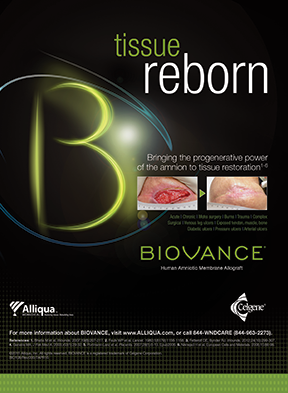With consolidation making Big Pharma even bigger, plenty of healthcare agencies spent 2014 in a state of worry. Then there’s HLG Communications, the Philadelphia-based agency designed for smaller- and medium-size healthcare entities, and it’s doing just fine. “This has been an exceptional year for us,” says president David Winigrad. “We’ve continued to evolve.”
Revenues for 2014, in the range of $5 to $10 million, rose 15% from 2013. Client Alliqua BioMedical, a woundcare company HLG added to its roster in 2013, is growing fast, and this year the agency helped it launch two new products. And while its bread and butter has typically been in pharma and biotech, with such clients as GE Healthcare and Jazz Pharmaceuticals, HLG is also moving into a number of new areas—pursuing advocacy groups and medical associations, for example.
“We also diversified by bringing on Reproductive Medicine Associates, a group of large fertility practices that give us an opportunity to expand into less traditional areas,” Winigrad says. Other new accounts in 2014 include the Epilepsy Foundation and Strategic Project Solutions.
Head count is up a bit at 25, which includes the addition of Glenn Stevens as creative director.
Winigrad continues to have high hopes for HLG’s Centric Infographics unit, which it launched in 2014. “We can provide our clients with fully coded infographics, ideally suited for the information age and the Web. There are so many limitations in print, but these provide tremendous value to clients.” Because they are so easily shared
across social-media channels, from companies to providers to associations and ultimately to patients, they’re a gift that keeps on giving, building awareness and brand equity each time they are passed along.
Winigrad says the group is now working with a half dozen organizations and he’s particularly proud that one infographic for the Epilepsy Foundation has been viewed on Facebook close to 400,000 times. “What we do is unique in that we build them to emphasize both searchability and sharability,” he adds.
One of the biggest challenges he sees in the industry is constrained financial resources, “as companies grapple with what is a more and more reimbursement-driven world. So where and how much they have to spend is a major challenge and requires that agencies continue to find more efficient ways of working,” he explains.
That’s led to HLG’s pursuit of less traditional clients, but also gives them something of an advantage. The agency operates on the principles of Lean Six Sigma, streamlining core processes to go beyond incremental changes and to reinvent the agency to offer greater value for clients: “We are independently owned and we consider that to be a strength, so we offer a lean operational model, with flexible staffing. We can do expert work in a very cost-effective manner.”
And while he is upbeat and passionate about the industry’s outlook—“I feel like it’s almost a duty to get the word out through promotional efforts, so patients can ultimately benefit from new drugs and technology. It’s what keeps me excited, year after year”—Winigrad is especially enthusiastic about 2015. “Obamacare will create opportunities, some unexpected, and people will be able to take advantage of those. And as healthcare continues to expand in a preventative fashion, there will be more room to grow.”
From the July 01, 2015 Issue of MM+M - Medical Marketing and Media








